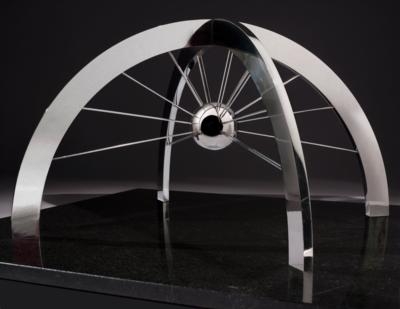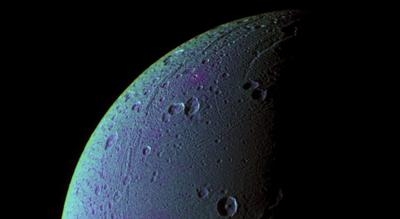Thu, Mar 15, 2012
Both Recognized For Work In The Aviation And Aerospace Fields
The Smithsonian Institute has announced the recipients of its 2012 National Air and Space Museum Lifetime Achievement and Current Achievement categories. Burt Rutan has been selected to receive the Lifetime Achievement award, while the Current Achievement trophy will go to the Cassini-Huygens Flight team. They will be presented their awards March 21 at a black-tie dinner in Washington, D.C.

"The winners of the 2012 Trophy Awards have challenged the established ways of thinking," said Gen. J.R. "Jack" Dailey, director of the museum. "Burt Rutan has inspired the aeronautical community to reach beyond the conventional for innovation and achievement; the Cassini-Huygens mission has changed our understanding of the Saturn system and contributed to our understanding of planetary systems' formation and evolution."
Established in 1985, the award recognizes outstanding achievements in the fields of aerospace science and technology and their history. As in past years, Trophy winners receive a miniature version of “The Web of Space,” a sculpture by artist John Safer (pictured).
Rutan has designed and built some of the most exciting machines ever to fly. His revolutionary lightweight, durable and efficient air- and spacecraft have broken numerous world records, including the first nonstop flight around the world without refueling (Voyager) and first privately developed reusable sub-orbital spacecraft (SpaceShipOne). To date, five Rutan aircraft are in the museum’s collections. Rutan’s companies—Rutan Aircraft Factory and Scaled Composites—have produced an eclectic range of homebuilt, research, civilian and military aircraft that have changed construction and engineering, solved specific aeronautical problems and captured the imagination of the aerospace industry and the world.

Arriving at Saturn in 2004, Cassini has been chronicling Saturn and its satellites and rings. From characterizing Saturn’s atmosphere and radiation belt, to imaging new faint rings, to detecting methane-carved stream-like drainage channels and lakes on Titan, to imaging geysers erupting from the south polar region of Enceladus, the discoveries made by this mission continue at a fantastic pace. The Cassini-Huygens team has far exceeded the planned primary mission duration and objectives, taking maximum advantage of this invaluable asset. Further, by careful management of spacecraft resources, the mission may continue for years, thus allowing the Cassini-Huygens Flight Team to answer scientific questions far beyond those conceived at the mission’s onset (Image of moon Dione from Cassini spacecraft courtesy of NASA).
More News
Terminal Radar Service Area Airspace surrounding designated airports wherein ATC provides radar vectoring, sequencing, and separation on a full-time basis for all IFR and participa>[...]
Very High Frequency (VHF) The frequency band between 30 and 300 MHz. Portions of this band, 108 to 118 MHz, are used for certain NAVAIDs; 118 to 136 MHz are used for civil air/grou>[...]
“From approximately November 2021 through January 2022, Britton-Harr, acting on behalf of AeroVanti, entered into lease-purchase agreements for five Piaggio-manufactured airc>[...]
Also: Virtual FLRAA Prototype, IFR-Capable Autonomous A/C, NS-32 Crew, Golden Dome Missile Defense Bombardier announced that the first production Global 8000 successfully completed>[...]
Aero Linx: The 1-26 Association (Schweizer) The Association’s goal is to foster the helpfulness, the camaraderie, and the opportunity for head-to-head competition that is fou>[...]
 ANN's Daily Aero-Term (05.29.25): Terminal Radar Service Area
ANN's Daily Aero-Term (05.29.25): Terminal Radar Service Area ANN's Daily Aero-Term (05.30.25): Very High Frequency (VHF)
ANN's Daily Aero-Term (05.30.25): Very High Frequency (VHF) Aero-News: Quote of the Day (05.30.25)
Aero-News: Quote of the Day (05.30.25) Airborne 05.23.25: Global 8000, Qatar B747 Accepted, Aviation Merit Badge
Airborne 05.23.25: Global 8000, Qatar B747 Accepted, Aviation Merit Badge ANN's Daily Aero-Linx (05.30.25)
ANN's Daily Aero-Linx (05.30.25)




